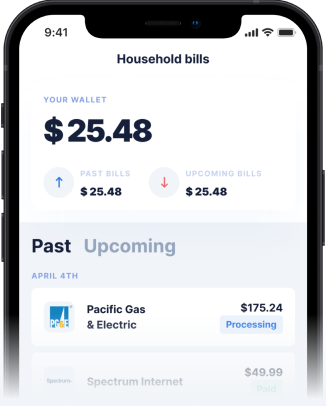Starting a Budget
Starting a budget can be a daunting task. Even if you’ve done it before, you might have been discouraged when you got off track. But if you can put together a good budget, stick to it and learn the best way to budget, it can actually be surprisingly easy and fun.
In this blog, we’re going to break down some simple and effective ways to budget, so you can worry less about your money and spend more time doing the things you like to do.
What Is a Budget? And Why Is It Important?
Budgets are used to track your spending, manage your money and learn about your financial health. With a good budget, you’ll know exactly where your money is supposed to go each month and how much you’ll have left, and you’ll be able to reach your financial goals more easily.
Budgets are important because they help you take control of your financial health. With a budget in place, you can greatly reduce the stress that finances can sometimes cause. You’ll worry less about being able to cover your expenses, and you’ll actually be able to set money aside for saving. Budgeting helps you to achieve financial freedom, and that’s something everyone can benefit from.
4 Types of Budgeting
There are a wide variety of budgeting methods out there, but we’ve found that the simplest methods are usually the most effective. Simple budgets are easier to understand and stick with in the long term. They’re also easy to set up and start following as soon as possible. Below, we’ve highlighted some of our favorite and most recommended types of budgeting.
50/30/20 Rule
The 50/30/20 rule is a great budgeting method, because it doesn’t require you to go into hyper-granular detail with your budgeting plan. You don’t have to track every single expense.
Instead, you just separate your budget by the following percentages:
- 50% for necessities
- 30% for wants and discretionary spending
- 20% for saving
With this method, you can make sure you’re paying all of your bills, you get money for the things you want to spend money on and you save for your future. Of course, the 50/30/20 numbers are not a hard and fast rule. You can easily switch up the percentages to better fit your personal financial needs. For instance, if you want to pay down debt, you can increase your savings to 25% or switch the wants and saving percentages until the debt is paid off.
Reverse
The reverse budget is for those who want to prioritize their savings over their expenses. This is also sometimes known as the “pay yourself first” budget. If you have the income to do so, you decide how much you want to put into savings and retirement, and then the remainder of your budget can be used for bills and other expenses. This budget is focused on building a solid foundation for a good financial future. The key to this budget is making sure you have enough for necessities after contributing to your savings goals.
The 60% Solution
If you’re someone who doesn’t want to track your expenses at all and you want the simplest budget out there, try the 60% solution. The 60% solution is an even simpler version of the 50/30/20 rule. With the 60% solution, you split your budget into two categories. The first 60% is committed to expenses, aka necessities and expenses that you feel are necessary to your lifestyle each month. The remaining 40% is up to you, but it’s recommended to dedicate portions of it to savings and retirement funds.
Zero Based
The zero-based budget says that at the end of the month, your income minus your expenditures should be zero. In other words, you need to put every dollar of your monthly income toward some kind of expense. But that doesn’t mean that you should pay your bills and then just spend the rest. An “expense” can be anything. With zero-based budgets, you should pay bills first, and then you can decide where you put the rest of your money. It could be savings, retirement funds, stocks, fun money or anything else you might want to put money toward.
Discover Which Option Is Best for You
These budgets are great options for those who are new to budgeting. Take a look at your financial situation and try whichever one you think will work best. If that method isn’t working out, don’t be afraid to switch it up. It might take a couple of tries for you to find the budget that best fits you.
3 Excuses Why People Don’t Budget
Now that we have a few budget options outlined, let’s look at some of the (not so great) excuses people have for not budgeting.
It Isn’t Fun: Too Much Time and Effort
This one is the most common, and it has some truth to it. Budgeting might not be fun at first. It also will take a little extra time and effort each month to get things in order. But you know what is fun? Not having to stress about money. Budgeting frees you up to spend money on things that you do think are fun. Also, once you get the hang of budgeting, it gets much easier and takes a lot less time and effort.
Budgets Are Hard if You’re Not Good at Math
Plenty of people aren’t good at math. Luckily, that doesn’t matter when it comes to budgeting. Modern technology makes it super easy to manage everything you need to calculate. Budgeting apps can even do it for you.
Only People Who Are Struggling Have Them
Not true at all! In fact, people who have true financial freedom usually have a budget that helps them get there. Personal financial freedom doesn’t happen magically or by accident (most of the time). It takes some planning and budgeting to get there.
4 Ways to Get Started
Getting started is always the hardest part. Fortunately, the steps to get started are pretty easy. Here’s what you need to do to get the ball rolling.
Write Down Your Total Income
First, write down your total income. Figure out how much money you have coming in on a weekly, monthly and annual basis. This will be your jumping-off point for your budget.
Keep Record of All Expenses
Keep track of your regular, necessary expenses and see how much you spend each month. Find out which expenses are necessary and ongoing, so you can have them integrated as a regular part of your budget.
Subtract Your Expenses From Your Total Income
Take all of your total expenses and subtract them from your total income. How much is left over? The leftover amount can be used for saving and discretionary spending.
Start Tracking and Create Next Month’s Budget
Now you have a basic budget. Continue tracking your expenses and lay out a budget for next month. See if you can stick to it.
Download Gerald’s Online App
Gerald can take some of the hassles out of budgeting. With Gerald’s buy-now pay-later app, you can get notified of upcoming bill payments automatically, and you can get the money you need right away if you can’t cover it. Gerald takes the stress out of paying your bills each month.
With Gerald, you can easily get up to half of your paycheck early, making it simpler to get the money you need. Download Gerald and sign up today to start taking control of your finances!


